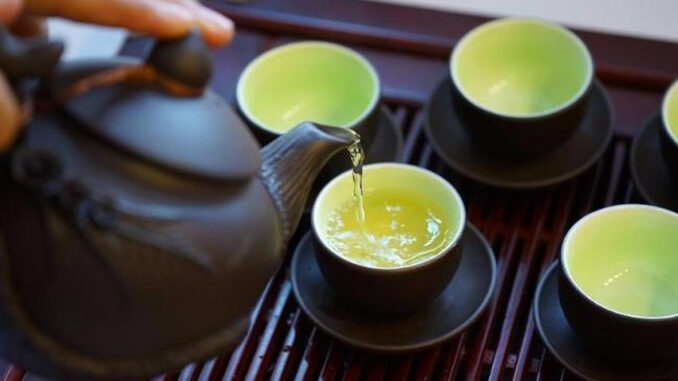
Unlike Japanese or British tea etiquette, Vietnamese tea culture does not require as many rituals to enjoy this healthy drink. In fact, sipping tea is a familiar activity yet a subtle art in the S-shaped country.
History of Vietnamese Tea Culture
When China occupied northern Vietnam in the 10th Century, they brought the tea culture and it has ever since influenced the Vietnamese lifestyle. After 1000 years being dominated, Vietnam eventually regained independence but many traditions and of course, a love for tea remained. In the period of the 13th to 15th centuries, the Vietnamese believed that tea represented philosophical values. Thus, many Vietnamese scholars used reading books and consuming tea as a means to escape from the chaotic life. However, it was not until the 1880s that French colonists established the first Vietnamese tea growing region in the area around Phu Tho – a province near Hanoi. At present, Vietnam is the seventh-largest global producer of tea with more than 100,000 tons imported each year.
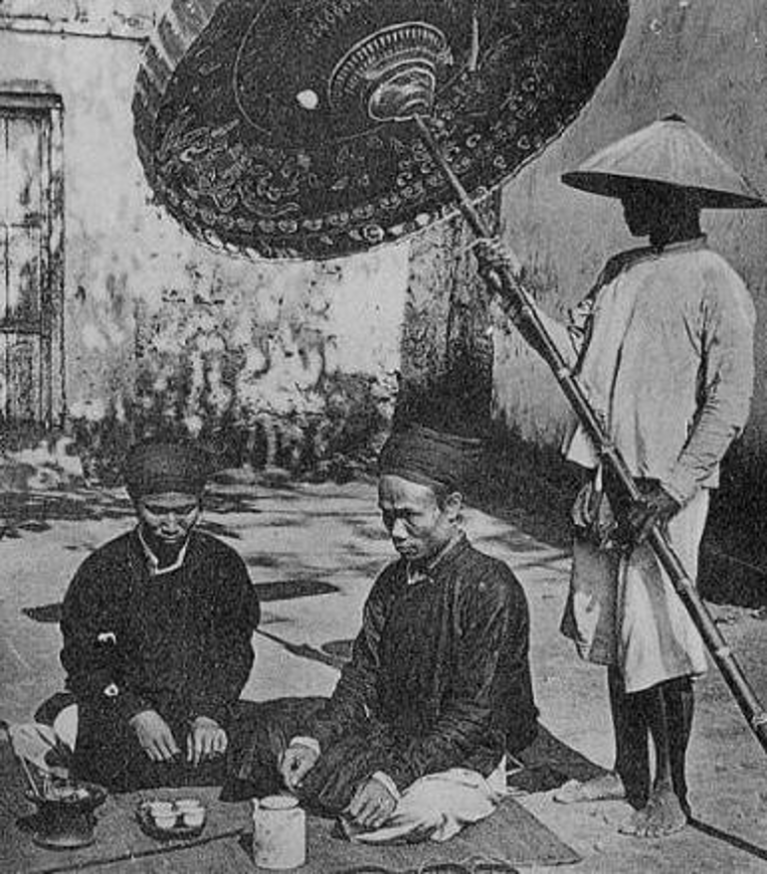
Customs of Vietnamese Tea Culture
Daily Life
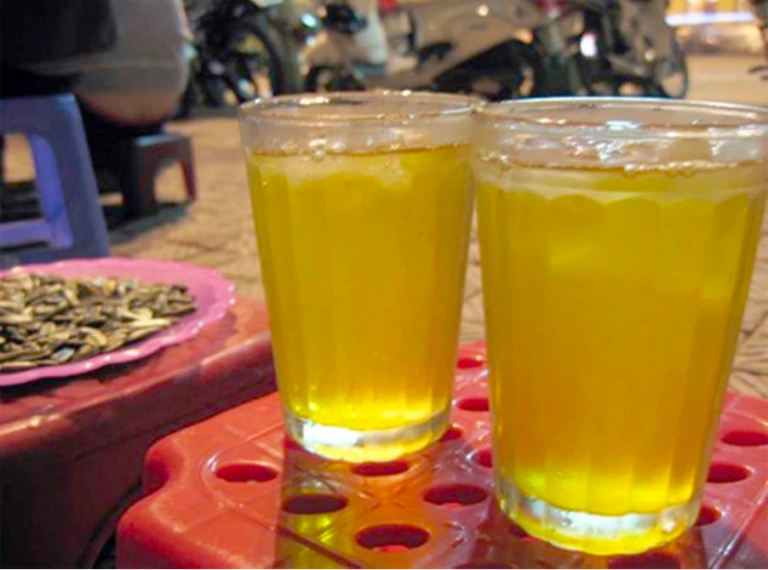
As a routine, Vietnameses often drink tea after meals to help digestion and cleanse the smell of food. Depending on their age and purpose, people will pick different types of tea. For instance, to enhance the immune system, elders choose teas with an acrid taste like green tea or oolong tea. Nowadays, the young invent many kinds of tea that match the modern taste, of all the most popular should be lime tea (Trà Chanh in Vietnamese), a combination of green tea, lime juice, sugar and ice is quite tempting for a chill-out.
Welcoming Guests
Though being a rustic and familiar drink, offering tea is a formal way to welcome any home visitors in Vietnam culture. Traditionally, the house owner prepares a finished teapot with tea leaves and boiled water in the kitchen. Then, he or she will bring the teapot to the living room and pour the tea water into cups for guests. In some families, dried fruits, candies or biscuits are provided to accompany the drink.
Special Occasions
Tea is an indispensable part of important events like Tet, Mid-autumn Festival, or weddings. On these occasions, people gather and chit chat while enjoying this drink. Traditionally, the tea must be hot and poured into pottery cups. In addition, the younger generations must offer tea to older people using two hands.
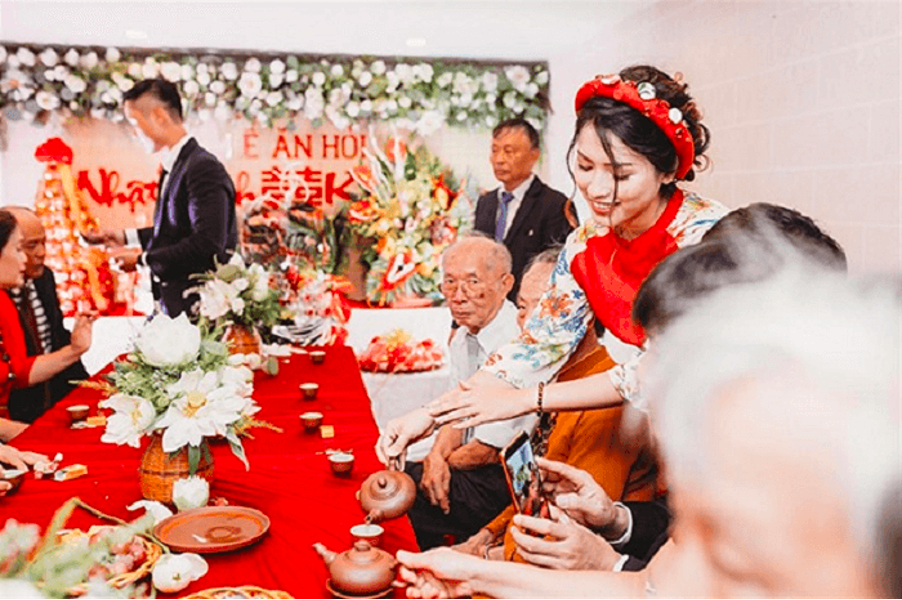
Drinking Etiquette in Vietnamese Tea Culture
Originally, a tea course requires boiling water, tea leaves, teacups, and a teapot. First, tea leaves and the boiling water are put in the teapot, then the teapot is covered tightly for about five minutes. While waiting, people usually discuss the fine aroma of the tea and keep it as the main topic like wine tasting sessions. Once the tea is ready, the teapot is held with two hands, and tea is gently poured into each cup. After that, people sip tea while enjoying side dishes like confectionaries, sweetened dried fruits, or mooncakes.
Types of Tea in Vietnamese Tea Culture
Green Tea
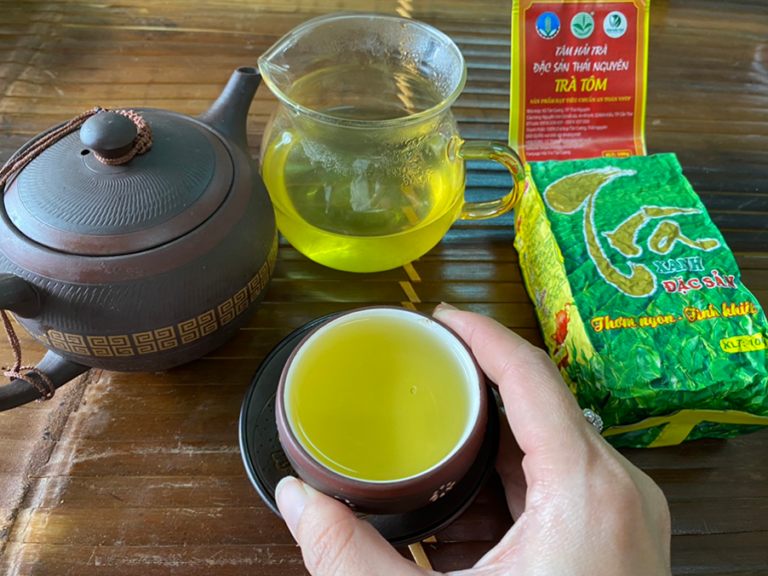
The most famous green tea is from Tan Cuong District (Thai Nguyen Province). Green tea is made of 4 steps: picking buds, wilting, cracking and drying. To prevent oxidation, when the tea buds are picked down, the process of wilting is carried out promptly, and the oxidation is immediately prevented by stir-frying or steaming.
High temperatures will cause enzymes in tea leaves to stop working. It therefore contains the most antioxidants and beneficial polyphenols. Green tea fibers are shaped by rubbing on hands, pressing on a pan, rubbing or rolling, creating many different shapes. Green tea may help prevent a range of ailments including cancer and lower cholesterol.
Vietnamese green tea can be served in many styles, including boiled fresh leaves (the simplest way), loose leaf green tea brewed in hot water and added ice, sugar or lemon. Tea water is usually green or yellow.
Oolong Tea
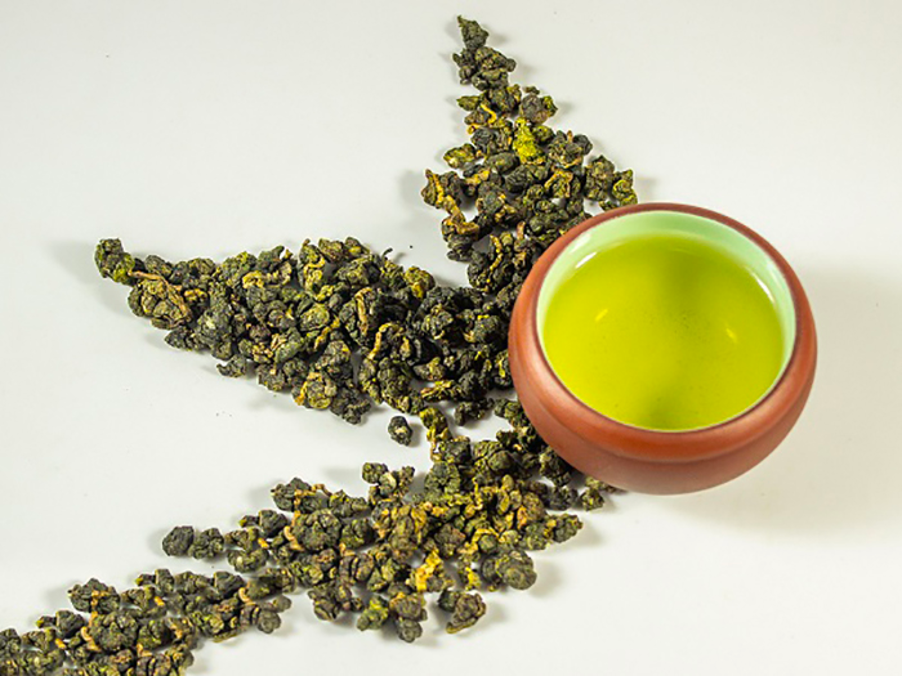
Oolong tea is a large group of fermented teas ranging from 20% to 80%. This degree of oxidation is reflected in the color of tea leaves, ranging from green to yellow, from amber to reddish-brown. Since its taste is mildly acrid and sweeter than green tea, it is suitable for those having little experience with tea. When drinking, you will sense the smell of wood, chestnuts, floral or fruity aroma, honey flavor, etc.
Lotus Tea
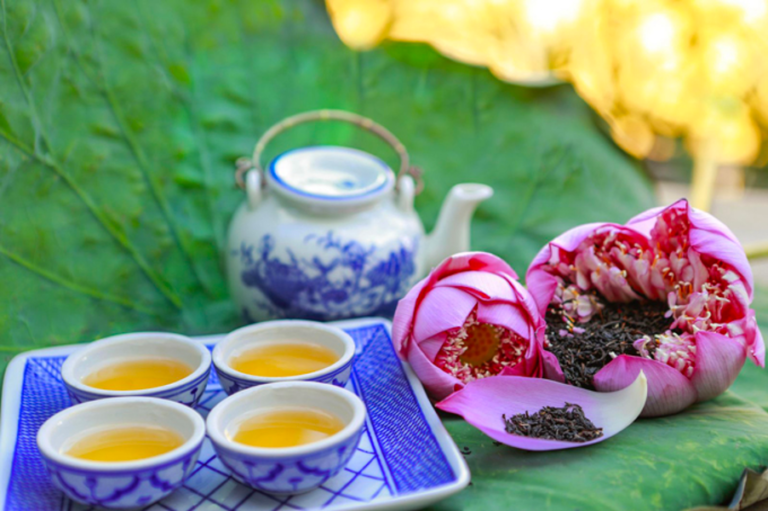
Beside green one, teas with the scent of flowers such as lotus, jasmine and grapefruit are unique examples of Vietnamese tea culture. The whole process is made by hand, in a very careful manner to transmit the natural scent (aroma and taste) into the tea. Scented tea allows the creation of a variety of blends, flavors and quality.
Among the common scented teas, lotus tea is represented as the national soul of Vietnamese tea culture. To produce the finest lotus tea, lotus flowers of lotus must be picked when they have just bloomed and kept fresh.
Lotus flower buds are very carefully peeled back, the petals preserved without a single rip or tear until the fresh green tea is put into. Once lotus buds are full of tea and rewoven, people keep them overnight and then, the process is reversed. Vietnamese people need to use nearly one thousand lotus flowers just to make a kilogram of lotus tea.
We would be pleased to have you visit and take in our breathtaking scenery, unwind on our white sandy beaches, immerse yourself in our exquisite culture, and get to know the people of the friendliest nation. Especially, to savor our delicious food at restaurants with Michelin ratings or to come and participate in our incredible mega-events involving culture, music, sports, and tourism!
Make your plan to Vietnam right now by obtaining a Vietnam visa at https://www.vietnam-evisa.org. We, a reputable and reliable Visa service, will assist you turn your plan into reality at the very first step.
Source: aseanvietnam.vn